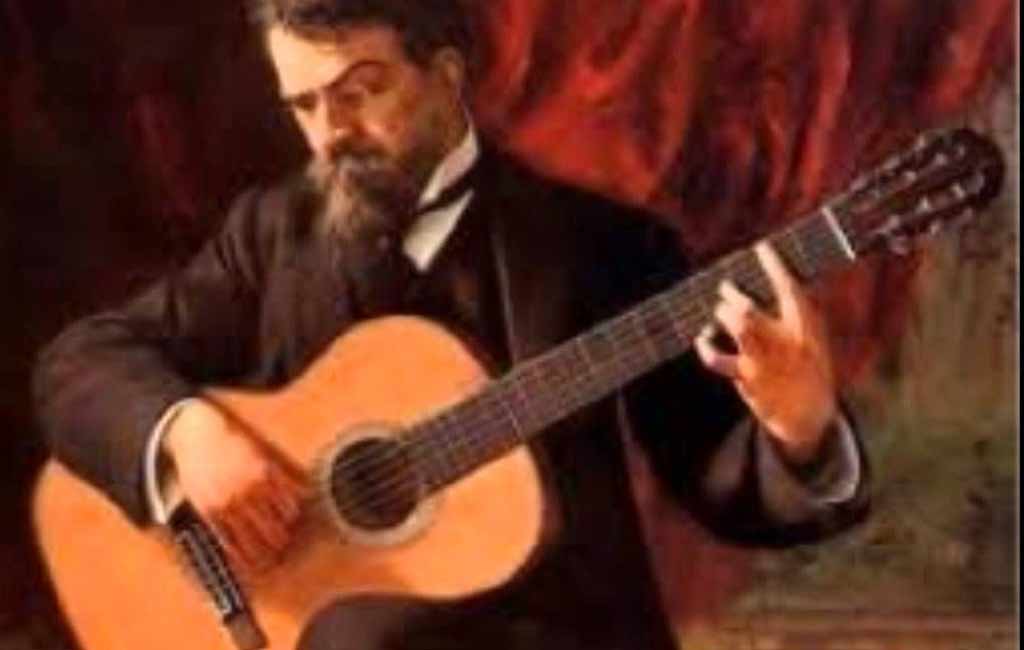Francisco Tarrega is without any doubt, one of the most influential figures in the development of the Spanish guitar. He made such a contribution with his opus, that one simple blog post is not enough to cover it in depth.
Tarrega was born in Villarreal, Province of Castellón, Spain, on 21 November 1852. As a 10-year-old kid, after Julián Arcas heard him play, he went to Barcelona to study music. But Francisco was a little devil in his teenage years, and behaved in Barcelona in such way, that it made his father absolutely crazy. After playing in the local bars, and not attending the music lessons for both piano and guitar his father was paying for, he was returned home to the Castellón de la Plana. But a few years later, he runs away again from home to Valencia and continues with bohemian life, so his underage years were obviously destined to be spent in that way…
Finally, as adulthood approached, our Francisco, or “Paco”, (as the nickname for the name “Francisco” is) came to his senses and went home to help his family. After a few calm years, he was able to gather enough money to purchase the guitar from Antonio de Torres. In 1874 Tárrega entered the Madrid Conservatory, but this time serious about his musical studies. His musical influencer was Emilio Arrieta, who convinced him to dedicate himself to the guitar instead of the piano.
His career rocketed in high skies, and he soon became the absolute nobility in the world of music in Madrid in the 19th century. A little more than a decade later, Emilio Pujol, Miguel Llobet, and Daniel Fortea were pupils of Tárrega, later to be three very important figures in the world of classical guitar. Tarrega’s musical abilities set him in the “creme de la creme” of the 19th-century Spanish society. A girl from a wealthy family María Josefa Rizo was presented to him as a student, and their love started from his lessons to her. Anyhow, she became sufficiently good to be able to follow him at the concerts, and they toured and performed together in Spain for some time. During his life, he composed 78 original scores and 120 transcriptions, that were used mostly for himself, for his own performances.
Francisco Tarrega played from London to the south of Spain, Valencia, where he met Conxa Martinez, who became a valuable patron to him and his wife. Soon after taking him to her estate in Granada, he came with the idea of Recuerdos De La Alhambra, somewhere around 1887. So that is the actual creation year of one of the most famous and beautiful pieces for the classical guitar ever written. Let me remind you that this piece is written in a lamenting mood because the Islamic Moors and the Jews – had to leave the country in 1492, so precisely 395 years AFTER IT HAPPENED…! The sorrow was still felt on the streets, after 4 centuries, the people had stories to tell, and their loss of Jews and Arabs – was still greatly felt at the end of the 19th century… Then they were totally banned from the rule and banished from the country, after the Castilla and Toledo, two of the strongest Christian provinces merged at that exact moment on the Iberian peninsula…
After that, he went to Argelia or Algiers, where he fell in love with Arabian drums and the new rhythms and composed Danza Mora at that time… THe story of him cutting off the fingernails is simply NOT TRUE, because, YOU CAN CUT OFF MY FINGERNAILS COMPLETELY NOW – AND I WILL STILL HAVE THEM. Enough to be able to play, because my nails and the entire fingers adopted to the regiment they are on – throughout my whole life. So that story just is not true, although Francisco Tarrega was the initiator of it… Being just 53 years old, unfortunately – he became paralyzed on his right side of the body. They were living in Barcelona at the time, and he was hoping that he will be able to get back on the stage to perform but finally – gave up on it. But until the very moment of death, this man was producing cultural gems that soon entered the national heritage, and he finished composing his last work “Oremus”, just before his death in 1809…
Besides the arpegio page on the website, you can enjoy in my performance of his E minor Study, one of the most simple and beautiful songs for classical guitar ever written…

